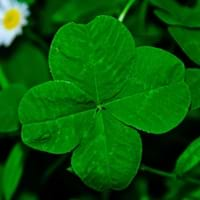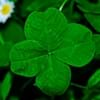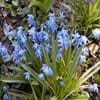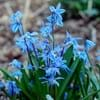Life Span
Perennial
Perennial
Type
Bulb or Corm or Tuber
Perennial
Origin
Mexico
Eastern Europe
Types
lucky clover is a type of clover
Not Available
Number of Varieties
Not Available
Habitat
Along Railroads, River side, Roadsides
Terrestrial
USDA Hardiness Zone
8-10
4-9
Sunset Zone
21,22
1a, 1b, 2a, 2b, 3a, 3b, 4, 5, 6, 7, 8, 9, 10, 11, 12, 13, 14, 15, 16, 17, 18, 19, 20, 21, 22, 23, 24
Habit
Clump-Forming
Clump-Forming
Flower Color
Yellow green, Magenta, Fuchsia
Yellow, Lavender, Blue Violet
Flower Color Modifier
Bicolor
Bicolor
Fruit Color
Not Available
Not Available
Leaf Color in Spring
Green, Light Green, Chocolate
Green, Sea Green
Leaf Color in Summer
Light Green
Green, Sea Green
Leaf Color in Fall
Several shades of Green
Green, Sea Green
Leaf Color in Winter
Light Green
Light Green
Leaf Shape
Heart-shaped
Lanceolate
Plant Season
Spring, Summer, Fall
Spring, Summer
Sunlight
Full Sun, Partial Sun, Partial shade
Full Sun, Partial Sun
Growth Rate
Medium
Medium
Type of Soil
Loam, Sand
Loam, Sand
The pH of Soil
Acidic, Neutral
Neutral
Soil Drainage
Well drained
Well drained
Bloom Time
Late Spring, Early Summer, Summer
Spring, Late Spring, Early Summer
Tolerances
Drought
Drought
Where to Plant?
Ground
Ground
How to Plant?
Seedlings
By dividing rhizomes, tubers, Seedlings
Plant Maintenance
Medium
Medium
Watering Requirements
Water every two or three days during warmer months
Average Water Needs, Do Not over Water
In Summer
Ample Water
Lots of watering
In Spring
Adequately
Moderate
In Winter
Less Watering
Average Water
Soil pH
Acidic, Neutral
Neutral
Soil Type
Loam, Sand
Loam, Sand
Soil Drainage Capacity
Well drained
Well drained
Sun Exposure
Full Sun, Partial Sun, Partial shade
Full Sun, Partial Sun
Pruning
Remove damaged leaves, Remove dead branches, Remove dead leaves
Remove damaged leaves, Remove dead branches, Remove dead leaves
Fertilizers
All-Purpose Liquid Fertilizer
All-Purpose Liquid Fertilizer
Pests and Diseases
Red blotch
Red blotch
Plant Tolerance
Drought
Drought
Flower Petal Number
Single
Single
Foliage Texture
Medium
Coarse
Foliage Sheen
Matte
Matte
Attracts
Bees
Hummingbirds
Allergy
Not Available
Skin irritation
Aesthetic Uses
Not Available
Showy Purposes
Beauty Benefits
Not Available
Not Available
Environmental Uses
Prevent weeds
Air purification
Medicinal Uses
Not Available
No Medicinal Use
Part of Plant Used
Leaves
Not Available
Other Uses
Traditionally considered as lucky plant
Used as Ornamental plant
Used As Indoor Plant
No
No
Used As Outdoor Plant
Yes
Yes
Garden Design
Bedding Plant, Container, Groundcover, Houseplant, Mixed Border, Rock Garden / Wall
Alpine, Edging, Mixed Border, Rock Garden, Wall
Botanical Name
OXALIS tetraphylla
IRIS pumila
Common Name
Four-leaved Pink Sorrel, Goodluck Plant, Lucky Clover, Mexican Wood Sorrel
Dwarf Iris
In Hindi
Lucky Clover
Dwarf Iris
In German
Glücksklee
Zwergiris
In French
trèfle porte-bonheur
Dwarf Iris
In Spanish
trébol de la suerte
Enano Iris
In Greek
τυχερό τριφύλλι
νάνος Ίρις
In Portuguese
trevo da sorte
Dwarf Iris
In Polish
lucky koniczyny
Dwarf Iris
In Latin
felix Trifolium
Iris Dwarf
Phylum
Magnoliophyta
Magnoliophyta
Class
Magnoliopsida
Liliopsida
Family
Oxalidaceae
Iridaceae
Clade
Not Available
Angiosperms, Monocots
Subfamily
Faboideae
Iridoideae
Number of Species
Not Available
Properties of Lucky Clover and Dwarf Iris
Wondering what are the properties of Lucky Clover and Dwarf Iris? We provide you with everything About Lucky Clover and Dwarf Iris. Lucky Clover doesn't have thorns and Dwarf Iris doesn't have thorns. Also Lucky Clover does not have fragrant flowers. Lucky Clover has allergic reactions like Not Available and Dwarf Iris has allergic reactions like Not Available. Compare all the properties and characteristics of these two plants. Find out which of these plant can be used as indoor plant. If you are interested to decorate your house and garden, find out aesthetic uses, compare them and select the plant which will beautify your surrounding. Along with beautification, try comparing medicinal and edible uses of Lucky Clover and Dwarf Iris and you can choose the plant having best and most benefits.
Season and Care of Lucky Clover and Dwarf Iris
Season and care of Lucky Clover and Dwarf Iris is important to know. While considering everything about Lucky Clover and Dwarf Iris Care, growing season is an essential factor. Lucky Clover season is Spring, Summer and Fall and Dwarf Iris season is Spring, Summer and Fall. The type of soil for Lucky Clover is Loam, Sand and for Dwarf Iris is Loam, Sand while the PH of soil for Lucky Clover is Acidic, Neutral and for Dwarf Iris is Neutral.
Lucky Clover and Dwarf Iris Physical Information
Lucky Clover and Dwarf Iris physical information is very important for comparison. Lucky Clover height is 12.70 cm and width 15.20 cm whereas Dwarf Iris height is 10.20 cm and width 15.20 cm. The color specification of Lucky Clover and Dwarf Iris are as follows:
Lucky Clover flower color: Yellow green, Magenta and Fuchsia
Lucky Clover leaf color: Green, Light Green and Chocolate
Dwarf Iris flower color: Yellow, Lavender and Blue Violet
- Dwarf Iris leaf color: Green and Sea Green
Care of Lucky Clover and Dwarf Iris
Care of Lucky Clover and Dwarf Iris include pruning, fertilizers, watering etc. Lucky Clover pruning is done Remove damaged leaves, Remove dead branches and Remove dead leaves and Dwarf Iris pruning is done Remove damaged leaves, Remove dead branches and Remove dead leaves. In summer Lucky Clover needs Ample Water and in winter, it needs Less Watering. Whereas, in summer Dwarf Iris needs Lots of watering and in winter, it needs Average Water.





